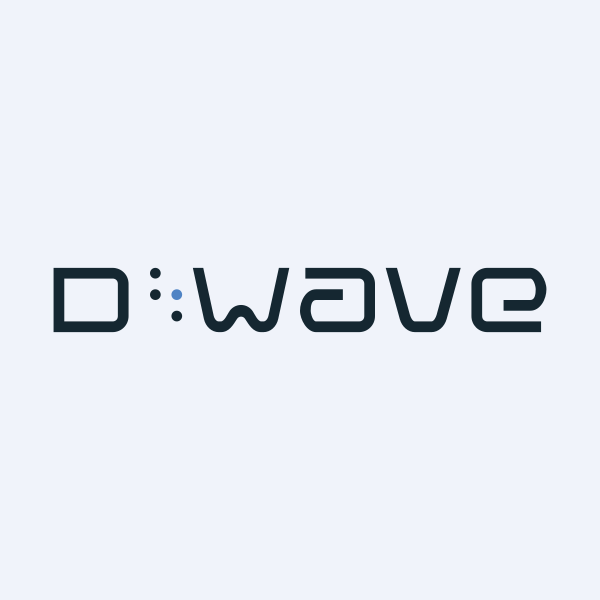Analyzing The Valuation Of D-Wave Quantum (QBTS) Following Kerrisdale Capital's Report

Table of Contents
Kerrisdale Capital's Report: Key Allegations and Their Impact
Kerrisdale Capital's report leveled serious accusations against D-Wave Quantum, significantly impacting its market capitalization and investor confidence. The report challenged D-Wave's technological claims, business model, and financial projections. The immediate market reaction was swift and dramatic, with the QBTS stock price experiencing a sharp decline and a surge in trading volume, reflecting the intense investor scrutiny.
The most impactful accusations included:
- Overstated Technological Capabilities: The report argued that D-Wave's quantum annealing technology is less powerful and versatile than the company publicly claims, limiting its potential applications.
- Inflated Revenue Projections: Kerrisdale questioned the plausibility of D-Wave's ambitious revenue growth targets, suggesting they were overly optimistic and lacked a solid foundation.
- Concerns about the Long-Term Viability of the Business Model: The report raised concerns about the long-term sustainability of D-Wave's business model, highlighting the challenges in generating sufficient revenue to support its operations and future growth.
- Questionable Accounting Practices: While not explicitly stated as a primary allegation, the report implicitly questioned certain accounting practices, prompting closer scrutiny of D-Wave's financial reporting.
Evaluating D-Wave Quantum's Technology and Market Position
D-Wave's quantum annealing technology, while pioneering, faces significant challenges. It differs fundamentally from gate-based quantum computing pursued by other companies like IBM and Google. D-Wave's approach excels in solving specific optimization problems, but its scalability and applicability to a broader range of problems are debated.
Comparing D-Wave to its competitors reveals a mixed bag. While D-Wave boasts a first-mover advantage and several established partnerships, its technology is arguably less versatile than the gate-based approaches, which are expected to achieve greater computational power in the long term. The market demand for quantum annealing is currently niche, though this could change if D-Wave successfully expands its technology's capabilities.
Strengths and weaknesses of D-Wave's technology and market position:
- Strengths: First-mover advantage, established partnerships, demonstrable quantum processing capabilities.
- Weaknesses: Limited scalability compared to gate-based approaches, competition from more versatile technologies, limited market size for current applications.
Financial Analysis of D-Wave Quantum (QBTS): A Post-Report Perspective
Analyzing D-Wave's financial statements reveals a company with significant operating losses and a substantial cash burn rate. The post-report period saw a further contraction in investor confidence, affecting the company’s market capitalization and potentially impacting future funding rounds. Key financial indicators require careful consideration:
- Revenue Growth Trajectory: Revenue growth, while positive, has been slower than projected, raising questions about the company's ability to achieve its long-term financial goals.
- Profitability Margins: D-Wave continues to operate at a significant loss, indicating a need for substantial revenue growth or cost reductions to achieve profitability.
- Debt Levels: High levels of debt could constrain the company's financial flexibility and hinder its ability to invest in research and development.
- Cash Flow: Negative cash flow further emphasizes the company's reliance on external funding to sustain its operations.
Considering Future Prospects and Investment Implications
The long-term outlook for D-Wave and the broader quantum computing industry is uncertain but potentially lucrative. D-Wave's success hinges on its ability to overcome the technological challenges highlighted in Kerrisdale's report, improve its scalability, and expand the applications of its quantum annealing technology.
Investing in QBTS presents both significant risks and potential rewards. The technology is still in its nascent stages, and the path to commercial viability is fraught with challenges. Potential scenarios range from a complete market failure to becoming a major player in a burgeoning industry.
Key investment considerations:
- Technological Risks: The risk of technological obsolescence or failure to achieve the promised computational power is substantial.
- Market Risks: The market for quantum computing is still developing, and the demand for D-Wave's specific technology remains to be seen.
- Financial Risks: D-Wave's high cash burn rate and operating losses present significant financial risks.
- Potential for Future Growth: The potential for significant growth in the quantum computing market, if D-Wave successfully overcomes its challenges, is a significant upside.
Conclusion: Navigating the Uncertainty: A Post-Report Valuation of D-Wave Quantum (QBTS)
This analysis of D-Wave Quantum's valuation post-Kerrisdale Capital's report reveals a complex picture. While D-Wave holds a pioneering position in the quantum computing industry, significant concerns remain regarding its technology, business model, and financial performance. The report has undoubtedly impacted investor sentiment, leading to a reevaluation of the company's prospects. Whether the current valuation accurately reflects D-Wave's true potential is debatable, highlighting the need for rigorous due diligence. Before making any investment decisions related to D-Wave Quantum (QBTS) or other quantum computing stocks, it's crucial to conduct thorough research, carefully weighing the substantial risks and rewards inherent in this emerging sector. The D-Wave Quantum valuation, and indeed the entire quantum computing investment landscape, remains highly volatile and necessitates careful consideration.

Featured Posts
-
 Tyler Bate Back On Wwe Raw Dunne And Bate Reunion
May 21, 2025
Tyler Bate Back On Wwe Raw Dunne And Bate Reunion
May 21, 2025 -
 Porsches Struggle Balancing Ferraris Sportiness And Mercedes Luxury In A Trade War Climate
May 21, 2025
Porsches Struggle Balancing Ferraris Sportiness And Mercedes Luxury In A Trade War Climate
May 21, 2025 -
 Paulina Gretzky Dustin Johnsons Wife Career And Family Life
May 21, 2025
Paulina Gretzky Dustin Johnsons Wife Career And Family Life
May 21, 2025 -
 Peppa Pigs Sisters Birth The Name Thats Got Fans Talking
May 21, 2025
Peppa Pigs Sisters Birth The Name Thats Got Fans Talking
May 21, 2025 -
 Your Guide To Sandylands U Airtimes And More
May 21, 2025
Your Guide To Sandylands U Airtimes And More
May 21, 2025
Latest Posts
-
 Was Liverpool Lucky To Beat Psg Arne Slots Perspective On Alisson Becker
May 22, 2025
Was Liverpool Lucky To Beat Psg Arne Slots Perspective On Alisson Becker
May 22, 2025 -
 Arne Slot Liverpools Lucky Win Against Psg And The Worlds Best Goalkeeper
May 22, 2025
Arne Slot Liverpools Lucky Win Against Psg And The Worlds Best Goalkeeper
May 22, 2025 -
 1 1
May 22, 2025
1 1
May 22, 2025 -
 Guardiolas Exit Manchester City Linked With Arsenal Legend As Potential Replacement
May 22, 2025
Guardiolas Exit Manchester City Linked With Arsenal Legend As Potential Replacement
May 22, 2025 -
 Defining The Sound Perimeter Musics Influence On Social Cohesion
May 22, 2025
Defining The Sound Perimeter Musics Influence On Social Cohesion
May 22, 2025
